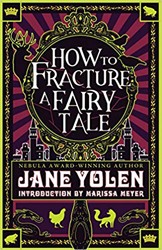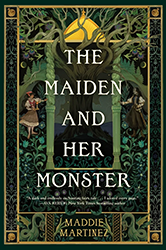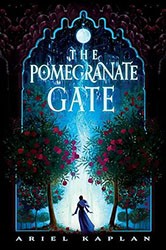The past of Jewish persecution intersects with a dystopian future in Helaine Becker’s fictional synthesis of history and myth. A revised edition of her 2014 novel, with new illustrations by Vero Navarro, Becker’s compelling story of a young boy, Dany, and his fight against authoritarian terror raises issues of courage, complicity, and Jewish identity. By creating a fictional, but still recognizably Jewish, culture in her novel, Becker both universalizes her story and affirms that Jewish suffering and resistance to oppression are at its core. The golem, a creature of clay controlled by humans invoking God’s power, is as vulnerable as the family with whom he finds a temporary home. Gottika does not recycle his poignant fate but rather reimagines it.
Dany and his family are “Stoons.” They live on the outskirts of a metropolis but their neighborhood, known as “the Stews,” is really a ghetto. Its residents are passive victims who merely respond to those who control them, although their worsening circumstances would seem to call for action. Becker’s picture of a self-abasing people waiting for help is not a sympathetic one. Dany and his family, as well as almost everyone they know, are trapped in some form of “the staring sickness,” a kind of self-destructive passivity. His mother shows signs of clinical depression and his father, a scholar, deludes himself with endless rationalizations. But Dany is more aware than the adults around him: “I was only a little kid back then, but I knew enough to be scared. I knew that things break when they fall.”
The author introduces Jewish elements gradually, drawing the reader into the story with increasing parallels to Jewish history and religious practice. The Stoons are legally marginalized, forbidden from entering many professions, including medicine, law, and magic. Clear allusions to the Nazi’s antisemitic Nuremberg Laws mix with fantasy, leading to questions about the narrative’s direction. Each Jewish detail is altered enough to defamiliarize its nature but still retain its core. Hebrew letters on the golem’s head are referred to as the “Oldtongue.” An amulet encasing “a sacred bit of parchment” is called a maz, but the wisdom it contains differs from that of a mezuzah’s scroll. Week-long mourning rituals replicate those of the traditional shiva, but with carefully selected changes: “We eat by the light of lanterns brought by our visitors, which they take away with them when they go.” In traditional Judaism, visitors bring food to a shivahome, but are prohibited from taking food away with them when they leave. Becker’s choices of when to add or alter customs reflect the sophistication of her fictional world.
One of the punishments inflicted on “Stoons” is a one-child policy for their families. Like so many of Becker’s allusions, this particular cruelty has historical and contemporary connotations. As in medieval Spain, even the most powerful rulers of Gottika may have “tainted” ancestry, and the obvious references to Nazi Germany abound in the novel. When Dany’s father, Rob Judah Haleoni, conjures the golem out of kabbalistic prayer, this man of clay becomes a brother to Dany as well as a potential liberator of his community. But it will take more than prayer and arcane rituals to convince a powerless “People of the Useless Wagging Tongue” that they need to take their fate into their own hands. Collaboration or silence, and failing to come to terms with their past, will only lead to death.
Vero Navarro’s illustrations, with spare black-and-white graphic novel style, enhance the text. Some provide additional clues such as a volume of the Zohar in a scene of storm troopers seizing books and destroying them. Others are intimate portraits of the characters’ conflicts: the sadness of the faces of Dany’s parents as they begin to reckon with their mistakes, the brotherly bond between a round and clumsy golem, and the people who both shelter and depend on him. Navarro’s visual interpretation adds a deep resonance to Becker’s story. Together, author and illustrator have infused new life into the story of the golem, animating him once more with perceptiveness and depth.
Emily Schneider writes about literature, feminism, and culture for Tablet, The Forward, The Horn Book, and other publications, and writes about children’s books on her blog. She has a Ph.D. in Romance Languages and Literatures.





